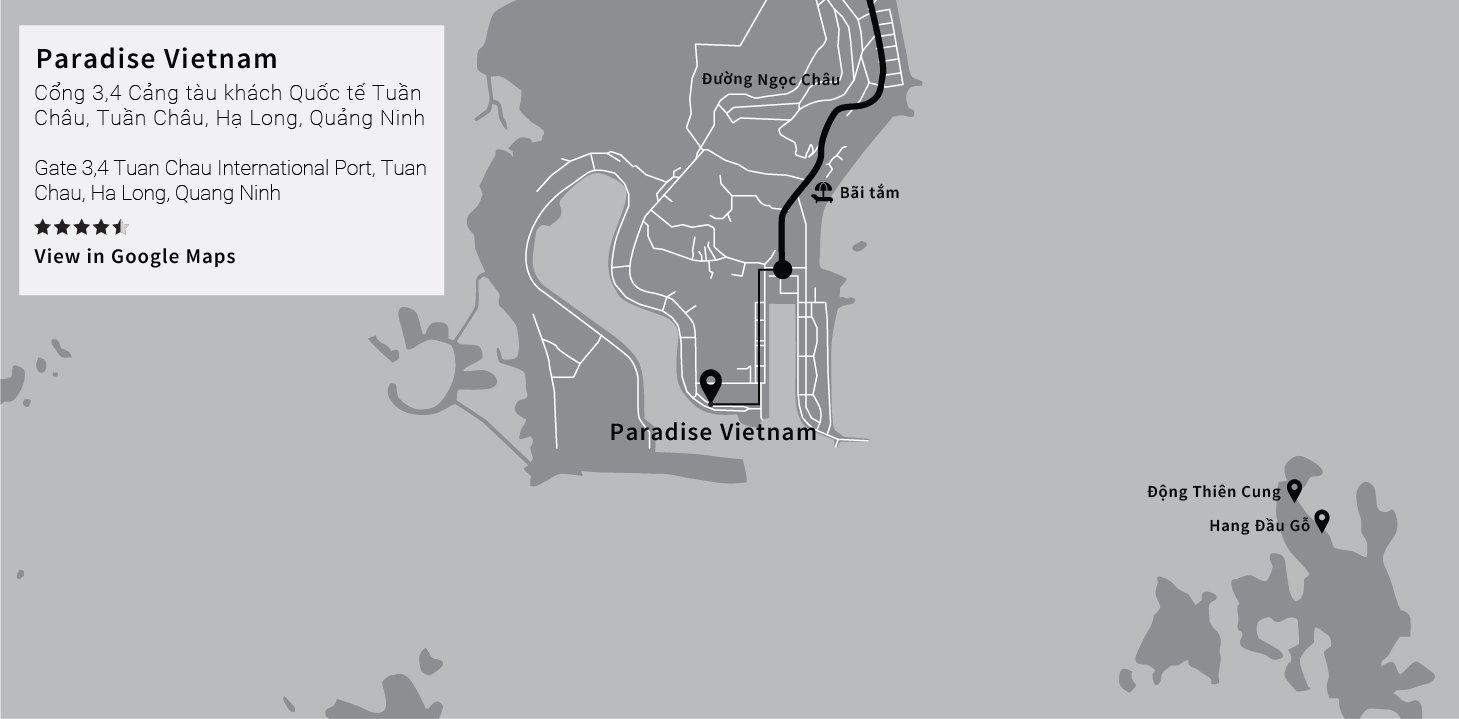
Fascinating Islets of Halong Bay
Discover the fascinating islets of Halong Bay, a breathtaking drowned karst landscape and a UNESCO-inscribed site. With 1,969 limestone islands and islets, this geological wonder offers a plethora of cave systems waiting to be explored, and pristine beaches ideal for swimming and sunbathing. Embark on an unforgettable journey to witness the best examples of this geological formation in the world.
Cruising the serene, emerald waters of Halong Bay and sailing past islands and islets, travellers can observe first-hand the diversity of the terrain: floating fishing villages, as well as karst towers and pillars that support diverse animal and plant life. While there are larger islands — Cat Ba, for example — that are often on a tourist’s itinerary, the less well known islets are worth exploring for a unique experience and an insight into Vietnamese culture.
Cho Da Islet
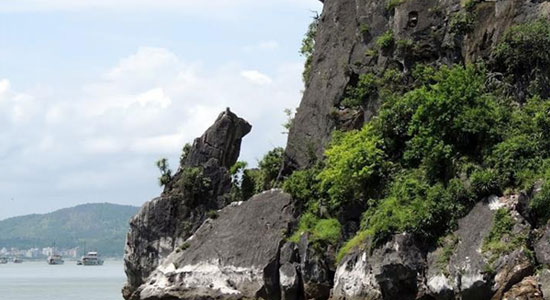
Cho Da Islet
The names for the many islets and islands in Halong Bay are taken from easily identified shapes. Cho Da Islet (Stone Dog Islet) is one such example. A “dog” sits on the islet, around 8 metres above sea level. According to local tradition, stone dogs are guardians, and in ancient times, they could be seen at the gate of every village, temple or pagoda. According to local legend, this particular stone dog has been protecting Halong Bay for millions of years.
Location: Cho Da Islet is located in the west of Halong Bay, about 4 kilometres south-east of Tuan Chau Marina, near Thien Cung and Dau Go Caves.
Trong Mai Islet

Trong Mai Islet
Trong Mai Islet (Chicken Mate, Kissing Rocks or Fighting Cocks islet) is a jagged rock formation and one of Halong Bay’s most iconic landmarks. At just 12 metres tall, the islet resembles two chickens standing in the midst of the Bay, loving and protecting each other — as they have done for thousand years. Some say that the rocks are similar to the image of two angry roosters engaged in a traditional cockfighting match.
Location: Trong Mai Islet is located in the west of Halong Bay, about 6 kilometres south-east of Tuan Chau Marina, near Thien Long and Hoa Cuong Caves.
Oan Islet
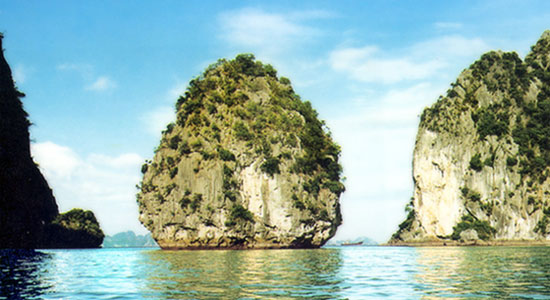
Oan Islet
Oan Islet, which is 22 metres high, is said to be shaped like a sticky rice offering to Buddha. The island’s main claim to fame is for being one of the locations for the 1992 movie Indochine, starring French actress, Catherine Deneuve, who filmed several scenes there. Props that were purpose-built for the film — a stone-paved road to the beach and the prisons — remain intact. Indochine won the Oscar for Foreign Language Film in 1993.
Location: Oan Islet is located north of Halong Bay, about 9km to the east of Tuan Chau Marina, near Bai Tho Mountain.
Con Coc Islet
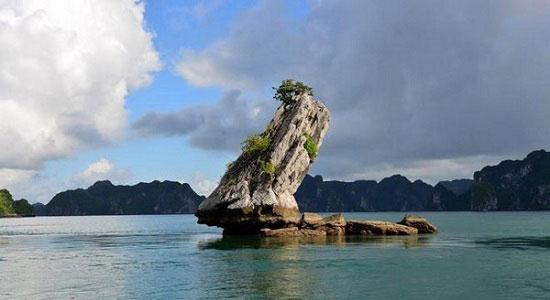
Con Coc Islet
Con Coc Islet (Toad Islet) looks remarkably like an amphibian. Toads and frogs, while considered ugly by the Vietnamese, do have utility because in the dry season, farmers rely on toads to indicate rainfall. It is said that the 8-metre-high toad — carved by nature — waits patiently in the ocean for rain, watching travellers as they sail by.
Location: Con Coc Islet is located in the south of Halong Bay, about 19 kilometres southeast of Tuan Chau Marina, near Cua Van floating village.
Ngon Cai Islet
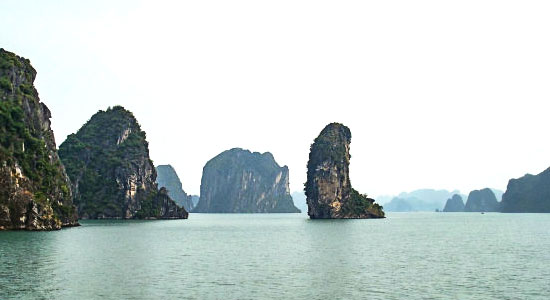
Ngon Cai Islet
Ngon Cai Islet (Thumb Islet) resembles an enormous thumb rising up from the sea. This karst limestone pillar is approximately 6,000 years old and formed as a result of sea-level changes. According to Halong Bay locals, a thumbs-up symbolises good luck — a common symbol in many cultures across the globe. Travellers say that Mother Nature created this islet to remind everyone that Halong Bay is amazing and should be preserved for future generations.
Location: Ngon Cai Islet is located west of Halong Bay, about 6 kilometres to the southeast of Tuan Chau Marina and 1 kilometre north of Trong Mai Islet.
Experience the allure of the fascinating islets of Halong Bay and embark on an unforgettable journey with Paradise Vietnam. Join us and explore the wonders of Halong Bay, where Paradise Vietnam awaits to create an extraordinary and memorable adventure for you.







